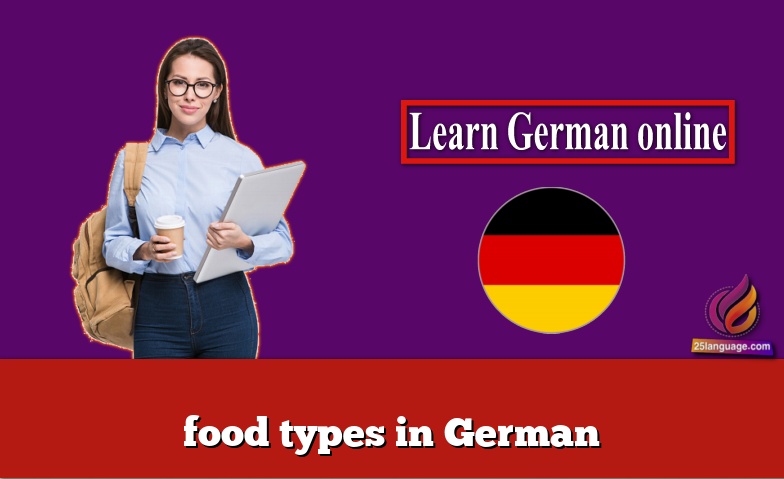food types in German

Certainly! Learning food types in German is a great way to expand your vocabulary and enhance your ability to talk about food and dining experiences in German-speaking countries. Here’s an introduction to different food types in German:
Enjoy exploring the world of food in German, and don’t forget to practice using these phrases in conversations or when reading menus in German-speaking countries!
| German Phrase | English Translation |
|---|---|
| Obst | Fruit |
| Gemüse | Vegetables |
| Fleisch | Meat |
| Fisch | Fish |
| Milchprodukte | Dairy products |
| Brot | Bread |
| Nudeln | Pasta |
| Reis | Rice |
| Eier | Eggs |
| Käse | Cheese |
| Gewürze | Spices |
| Salat | Salad |
| Suppe | Soup |
| Dessert | Dessert |
| Getränke | Beverages |
| Snacks | Snacks |
| Süßigkeiten | Sweets/Candy |
| Kuchen | Cake |
| Meeresfrüchte | Seafood |
| Getreide | Cereals/Grains |
These food types will help you to describe different categories of food in German. To further expand your vocabulary, you can learn specific food items within each category. For example, within the category “Fleisch” (meat), you can learn words like “Huhn” (chicken), “Rind” (beef), “Schwein” (pork), and so on.
Practice using these food types in sentences and conversations to reinforce your learning. It will be helpful when ordering food at restaurants, grocery shopping, or discussing food preferences in German. Guten Appetit! (Enjoy your meal!)





























